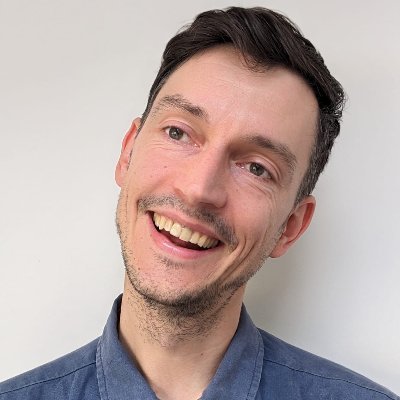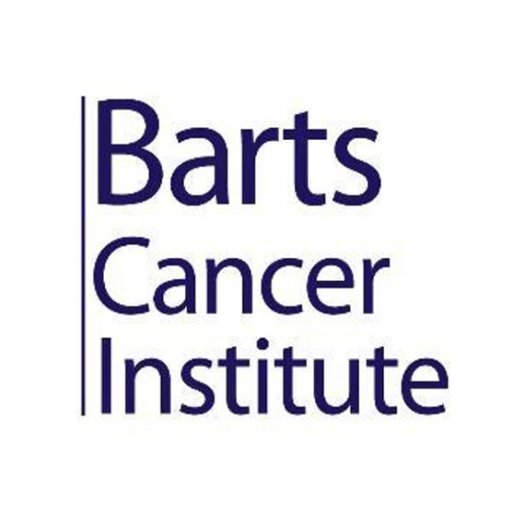
Mike Spencer Chapman
@doctor_msc
Followers
549
Following
374
Media
28
Statuses
330
Haematology doctor & researcher, UK. Interested in blood ageing, transplant, cancer and development. Lapsed musician.
N 51°27' 0'' / W 0°6' 0''
Joined October 2011
So pleased to have the paper out, available here: https://t.co/LZ5wLaesaD For me this was discovery science as I had always hoped it would be. Unpredictable, a lot of fun, and some proper detective work with plenty of twists & turns on the way. Brief thread below 🧵
1
2
14
Thank you HaemStar! It was a great day, lots of exciting & motivating talks - really recommend future events to all haem trainees/ those interested in choosing haem training
Fair to say we were all blown away by the incredible work of @doctor_msc. Taking us back to science basics with his work on phylogenies and clonal dynamics. A truly dynamic and captivating talk! Thank you so much for joining us at #haemSTAR25
0
0
7
@doctor_msc @mst_paralogue Congratulations on your elegant paper! It's great to see #LesionSegregation being identified in other settings, and used as the basis for your interesting and important biological insights into mutagenesis, cancer biology, and evolution...
1
1
1
In a paradigm shift in how we view mutations, researchers uncover forms of DNA damage in healthy cells that can persist unrepaired for years, published on @Nature. https://t.co/fAddQchnyP By @doctor_msc, @TimCoorens, Peter J. Campbell, et al. @Cambridge_Uni, @sangerinstitute
nature.com
Nature - Persistent DNA lesions can occur throughout the human lifespan and can remain in the genome of affected cells for several years and generate a substantial proportion of the mutational burden.
0
2
4
DNA damage can go unrepaired for years, which can create multiple chances to generate harmful mutations that could lead to cancer 🧬 Read more about this research, and how it changes the way we think about mutations ⤵️ https://t.co/rRbFTbW8Nj
2
6
17
A huge thank you to Peter Campbell, my supervisor whose insights were vital to getting this study started. When I showed him the 1st unexpected mutation he said (typically) ‘I wondered if this might happen..’ Also, thanks to @imartincorena & @TimCoorens for valuable input.
2
0
4
Also, the whole idea of these persistent lesions builds on the concept of 'lesion segregation' observed (again, unexpectedly) and developed by @S_J_Aitken @mst_paralogue and team.
2
0
2
This discovery science is only possible thanks to the large-scale somatic phylogeny datasets re-analysed here, generated by @Emily_LMitchell @StanleyWKNg @WilkMatthias @TheBoettcherLab @ken1_yossy @jyoti_nangalia & others, funded by @CR_UK @sangerinstitute @wellcometrust +others
1
0
1
Intriguingly, blood stem cells had a particular type of very long-lasting damage (~2-3 years), leading to 15-20% of their mutations – some contributing to cancer. This damage wasn’t evident in other tissues. We have theories, but we don’t yet know why.
1
0
2
It was these patterns of unusual mutation inheritance, or multiple different mutations at the same site in closely related cells that was the key to recognizing & characterizing these unusual types of long-lasting damage.
1
0
1
If the base is partially recognizable, the DNA copying machinery may flip between copying it right, and copying it wrong in one specific way. This will only cause 1 mutation, but the pattern of inheritance will not fit a single acquisition event (a ‘phylogeny-violating variant’)
1
0
1
But what if it’s not? If the DNA damage sticks around through multiple rounds of cell division & DNA replication it may be misread in different ways in each round. This will lead to different mistakes at the same position (a ‘multi-allelic variant’).
1
0
2
If the damaged base is present during DNA replication it may be misread, resulting in permanent mutations that can contribute to cancer development. However, the DNA damage itself is usually recognized and mended quickly by repair mechanisms in our cells.
1
0
1
How did we work this out? DNA damage is distinct from a mutation. While a mutation is one of the 4 standard DNA bases (A, G, T or C) in the wrong place (like a spelling mistake), DNA damage is chemically altered DNA (more like some illegible writing).
1
0
1
After ‘pulling the thread’ we found the explanation. Some specific types of DNA damage persist unrepaired through multiple cell divisions, in some cases for years. This goes against the usual idea that damage is efficiently repaired by the cell’s DNA repair machinery.
1
0
1
I work with somatic phylogenies: family trees of 100s of cells from 1 individual, illustrating their relationships going back to conception. It is inferred from the pattern of shared mutations in the DNA. In 2019 I noticed a mutation that didn’t fit the phylogeny – the 'blip'
1
0
1
In science, we often see weird blips in the data. The question: is it artefact (usually!), or something new & exciting? We don’t always have time to dig deep. Our paper in @nature today came from just such a blip. So don’t ignore the weird stuff. Pull on that thread...
1
8
26
📰 Some forms of DNA damage linger unrepaired in healthy cells for years, according to a @Nature study led by Dr Mike Spencer Chapman @doctor_msc at BCI and @sangerinstitute. Read more👉 https://t.co/qKCqKA8KKM The findings could inform our understanding of cancer development.
0
6
8
Building on our discovery of #LesionSegregation, @doctor_msc and colleagues from @sangerinstitute find that some DNA lesions can persist in humans for months or years! "Prolonged persistence of mutagenic DNA lesions in somatic cells” https://t.co/nwFsbgJLOz
nature.com
Nature - Persistent DNA lesions can occur throughout the human lifespan and can remain in the genome of affected cells for several years and generate a substantial proportion of the mutational burden.
0
14
52
Fascinating stuff! Lots to learn about these structures. Congratulations Chris! 🎉
Hot off the press!! 🔥 Check out our work on the origins and impact of ecDNA. This was a team effort involving multiple collaborators as one of a three part series on ecDNA in @Nature
1
0
1






